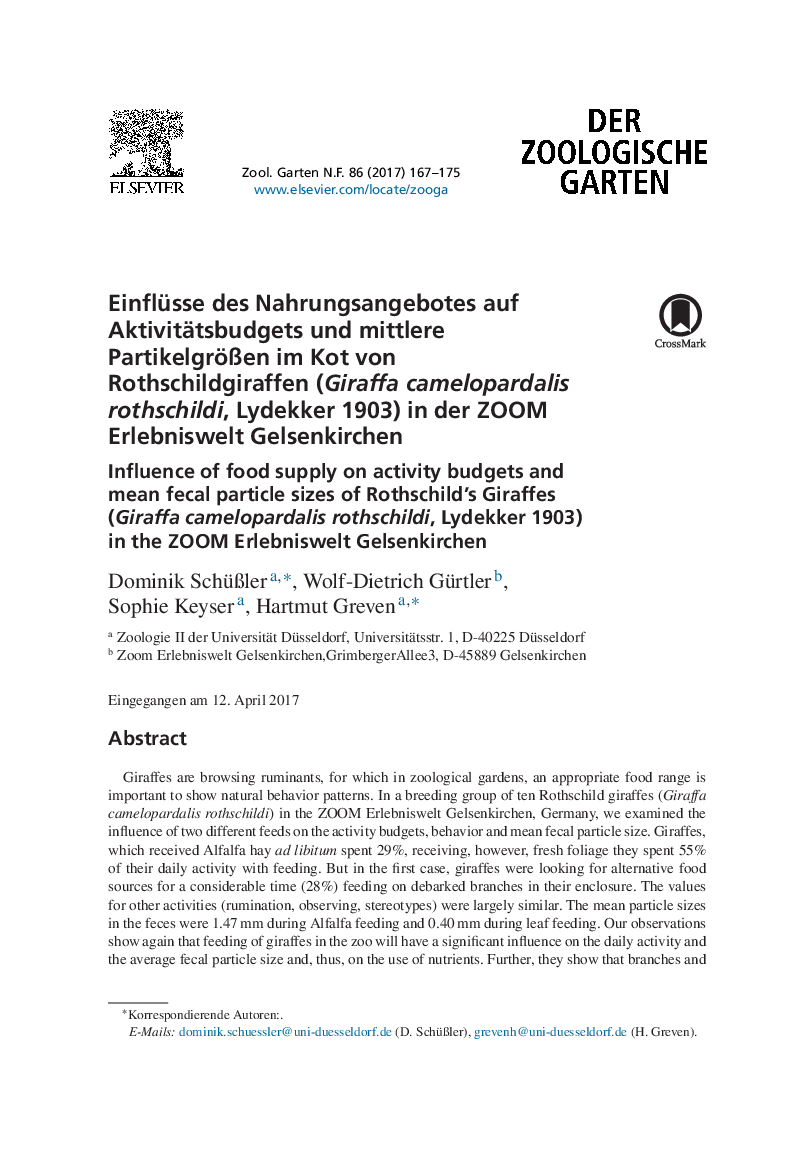| Article ID | Journal | Published Year | Pages | File Type |
|---|---|---|---|---|
| 5546096 | Der Zoologische Garten | 2017 | 9 Pages |
Giraffes are browsing ruminants, for which in zoological gardens, an appropriate food range is important to show natural behavior patterns. In a breeding group of ten Rothschild giraffes (Giraffa camelopardalis rothschildi) in the ZOOM Erlebniswelt Gelsenkirchen, Germany, we examined the influence of two different feeds on the activity budgets, behavior and mean fecal particle size. Giraffes, which received Alfalfa hay ad libitum spent 29%, receiving, however, fresh foliage they spent 55% of their daily activity with feeding. But in the first case, giraffes were looking for alternative food sources for a considerable time (28%) feeding on debarked branches in their enclosure. The values for other activities (rumination, observing, stereotypes) were largely similar. The mean particle sizes in the feces were 1.47Â mm during Alfalfa feeding and 0.40Â mm during leaf feeding. Our observations show again that feeding of giraffes in the zoo will have a significant influence on the daily activity and the average fecal particle size and, thus, on the use of nutrients. Further, they show that branches and twigs in their enclosure may be used as “feeding enrichment” to generate natural behaviour. Through the evasiveness shown, in the search for alternative sources of food, we conclude that in the zoo should be used as a so-called feeding enrichment for giraffes to generate a natural feeding stimulus.
